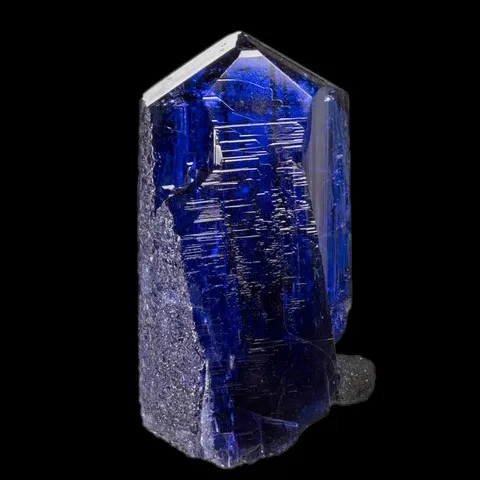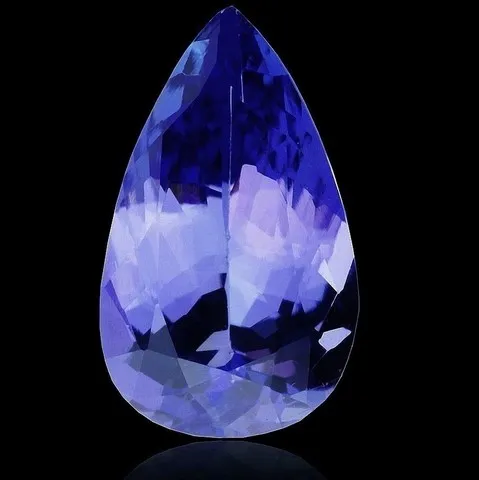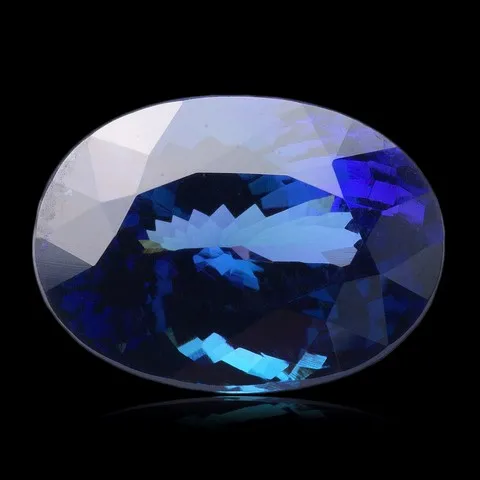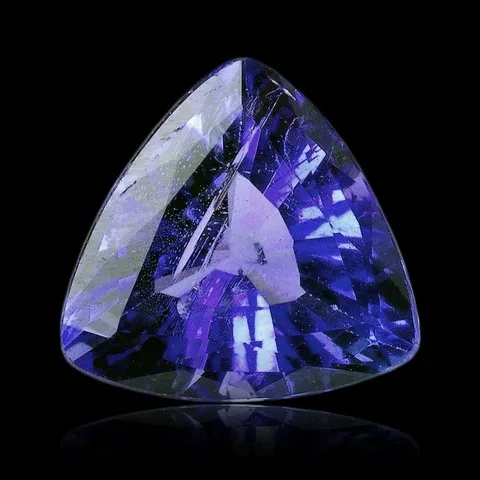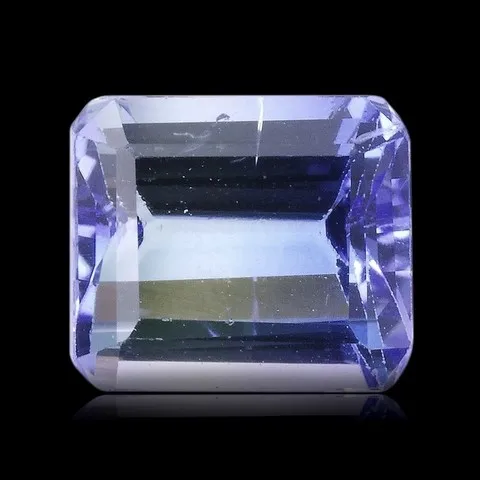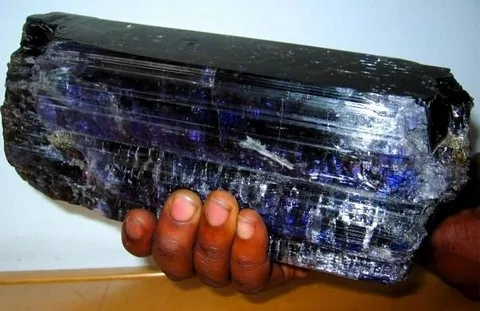TANZANITE
Class : Silicates
Subclass : Sorosilicates
Crystal system : Orthorhombic
Chemistry : Ca2Al3(SiO4)3(OH)
Rarity : Very rare
Tanzanite is the transparent and gemmy variety of zoisite, a mineral from the epidote group, which has an extraordinary purplish blue color and a pronounced trichroism ranging from blue to purple and gray-green. In 1967, a member of a Masai tribe came across a cluster of very transparent and intense blue crystals that survived erosion in Merelani, a region in northern Tanzania. He immediately alerted a local gem hunter named Manuel d'Souza, who quickly registered four mining requests. D’Souza hoped to have discovered a new sapphire deposit. Instead, the deposit contained one of the most coveted recent gems in the world. In a short time, 90 other operating requests appeared in the same area. No one was sure what the beautiful crystals were, but everyone wanted to extract it. The new gem will eventually be known as "tanzanite" and will sometimes rival ruby, sapphire and emerald in popularity. The discovery also caused unrest in gemological circles. The best gemologists around the world have started to study the new material. In 1969, they identified blue crystals as a new transparent variety of zoisite. Until then, zoisite was only known in its opaque green form, common in ornamental sculptures but not in jewelry. Interest in the blue gem was immediate. Tiffany & Co intervened to promote the new gem and gave it a name as exotic as its African origin "tanzanite". Tanzania is today the only known deposit for this variety. Tanzanite is found only in moderately metamorphic formations in the Merelani Hills, near Arusha, in compact mass but also in prismatic crystals up to 15 cm in length. It is associated with green diopside and graphite. Untreated, tanzanite is usually brownish. The heat treatment is what reveals its attractive pleochroic and purple blues. The blue crystals originally discovered by the Masai tribe member were an exception, they had probably been exposed to a source of natural heat. The Arusha area is a volcanic area of the East African rift, overlooked by one of the most atypical active volcanoes on the planet : Ol Doinyo Lengaï, but also by Kilimanjaro. In addition to its significant use in jewelry (both in cabochons for translucent specimens and in transparent gemtones), well-formed and colored crystals are highly sought after by mineral collectors.
Tanzanite in the World
Tanzanite in France
Tanzanite is not present in the French underground.
Twinning
No twinning known for this mineral species.
Heat treatment of tanzanite
Untreated, tanzanite is usually brownish. It is the heating which reveals its blue color. About 95% of the blue tanzanites of the market today owe their color to this heat treatment. When tanzanite is heated between 600°C and 650°C, its brownish color becomes uniform blue. This is due to a change in the valence of the vanadium present in trace amounts in tanzanite. Since the resulting color is more uniform from many angles, it is not surprising that tanzanite is systematically heated to attenuate its pleochroic colors brown, yellow or green. Greenish-bluish to greenish-brown stones can turn saturated blue with only a touch of green remaining. This treatment is impossible to detect because natural blue tanzanites are also heated but by volcanism... All blue tanzanites must therefore be sold as "supposed to be heated".
Fakes and scams
The demand for tanzanite has been high almost since its discovery, but there has not always been enough quality material to meet this demand. Also, to date we do not know how to synthesize tanzanite in laboratory, but an imitation appeared in the late 90's. This false tanzanite is actually a synthetic form of another precious stone : forsterite. Synthetic forsterite is pleochroic and as astonishing as it sounds strongly resembles tanzanite in color while its natural counterpart is green... In the United States, synthetic forsterite is sold for about a tenth of the price of natural tanzanite. Synthetic forsterite is not the only imitation of tanzanite on the market. Coranite is the trade name for bluish synthetic corundum used to mimic the unique hue of tanzanite. And tanavyte is the trade name for an aluminum garnet and purple synthetic yttrium (YAG) which also echoes the color of tanzanite. Even the glass served as an imitation of tanzanite.
Hardness : 6.5
Density : 3.15 to 3.36
Fracture : Irregular to conchoidal
Trace : White to blue
TP : Transparent to translucent
RI : 1.696 to 1.718
Birefringence : 0.006 to 0.018
Optical character : Biaxial +
Pleochroism : Strong
Fluorescence : None
Solubility : Hydrofluoric acid
Magnetism : Paramagnetic
Radioactivity : None

